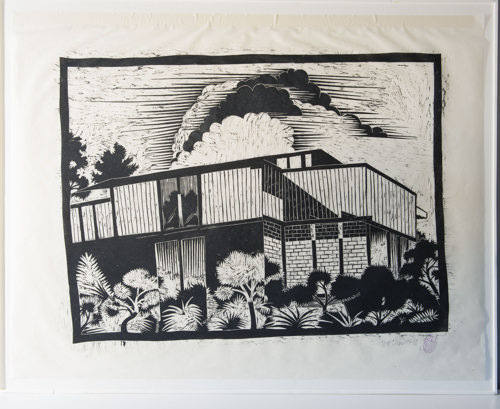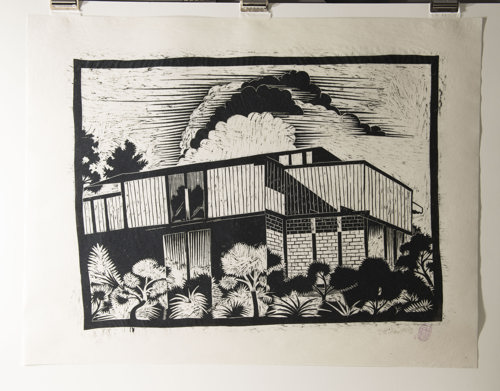- Events & Programs Home
- Calendar
- Accessibility
- Adults
-
Families & Teens
- Families & Teens Home
- 10x10 Teen Art Expo
- Art on the Rise
- Art Together: Art Making for Families with Children Ages 3–5
- Babies Sing with May Festival Minis
- Boy Scouts / Girl Scouts
- CAM Kids Day
- Family Storytime and Gallery Walk
- Family Studio: Art Making for Families with Children Ages 6–12
- Games in the Galleries
- Members-Only Baby Tours
- Public Baby Tours
- REC Reads
- Rosenthal Education Center (REC)
- Saturday Morning Art Class
- See Play Learn Kits
- Summer Camp
- Teen Fest: Zine and Comic Exchange
- RECreate
- Teachers
- Community Outreach
- Fundraisers
- Plan Your Own Event

- Events & Programs Home
- Calendar
- Accessibility
- Adults
-
Families & Teens
- Families & Teens Home
- 10x10 Teen Art Expo
- Art on the Rise
- Art Together: Art Making for Families with Children Ages 3–5
- Babies Sing with May Festival Minis
- Boy Scouts / Girl Scouts
- CAM Kids Day
- Family Storytime and Gallery Walk
- Family Studio: Art Making for Families with Children Ages 6–12
- Games in the Galleries
- Members-Only Baby Tours
- Public Baby Tours
- REC Reads
- Rosenthal Education Center (REC)
- Saturday Morning Art Class
- See Play Learn Kits
- Summer Camp
- Teen Fest: Zine and Comic Exchange
- RECreate
- Teachers
- Community Outreach
- Fundraisers
- Plan Your Own Event
Blog: CAM Uncovered
Blog: CAM Uncovered
- Home
- Plan Your Visit
- Art
-
Events & Programs
- Events & Programs Home
- Calendar
- Accessibility
- Adults
-
Families & Teens
- Families & Teens Home
- 10x10 Teen Art Expo
- Art on the Rise
- Art Together: Art Making for Families with Children Ages 3–5
- Babies Sing with May Festival Minis
- Boy Scouts / Girl Scouts
- CAM Kids Day
- Family Storytime and Gallery Walk
- Family Studio: Art Making for Families with Children Ages 6–12
- Games in the Galleries
- Members-Only Baby Tours
- Public Baby Tours
- REC Reads
- Rosenthal Education Center (REC)
- Saturday Morning Art Class
- See Play Learn Kits
- Summer Camp
- Teen Fest: Zine and Comic Exchange
- RECreate
- Teachers
- Community Outreach
- Fundraisers
- Plan Your Own Event
- Give & Join
- About
- Tickets
- Calendar
- Exhibitions
- Collections
- Blog
- Shop
Behind the Scenes in Conservation: 1011 Jerome Street, Cincinnati by Thom Shaw
by Conservation
4/15/2021
Thom Shaw , Phillip O. Smith , paper conservation
This print came to the paper lab because the original framing method had encouraged distortions to form across the top of the paper. The Japanese paper was adhered to the back board with a wide strip of pressure sensitive adhesive. The adhesive held the top of the sheet tightly to the board, while the rest of the large sheet of paper hung loose and was free to expand and contract with changes in relative humidity. The buckling between the tape and the printed area is clearly visible.

To correct the problem, our paper conservator softened the adhesive with a combination of gentle heat and solvent vapors and slowly separate the print from the mount with a scalpel. She then removed sticky adhesive residues mechanically from the back of the print. The distortions did not relax on their own, so our conservator humidified the paper and dried it under weight. The oil-based ink created another form of stress, preventing the paper from expanding evenly. Multiple rounds of humidifying and drying between thick felts, blotter paper and mat boards under weight were needed to coax the paper back into plane. The after treatment photograph shows the print closer to its original appearance. It is now housed in an acid-free mat with Japanese paper hinges that will allow the paper more freedom to react to any humidity changes it encounters while in the museum.

For people who are fans of Cincinnati artist Thom Shaw, this print may surprise them. Shaw created series of prints showing painful experiences of urban African Americans. In contrast, this bold wood cut made with the same Japanese paper and black ink that he used for his other prints is another kind of urban scene: a portrait of a house. The Mount Adams house was designed by Phillip O. Smith, an architect who lived and worked in the neighborhood, in 1967.

Thom E. Shaw (American, b.1947, d.2010), 1011 Jerome Street, Cincinnati, 1996, woodcut on paper, Gift of Allen W. Bernard, 2019.357
Cincinnati, OH 45202
Toll Free: 1 (877) 472-4226
Museum Hours
Museum Shop
Terrace Café
Library
Cincinnati Art Museum is supported by the tens of thousands of people who give generously to the annual ArtsWave Campaign, the region's primary source for arts funding.

Free general admission to the Cincinnati Art Museum is made possible by a gift from the Rosenthal Family Foundation. Exhibition pricing may vary. Parking at the Cincinnati Art Museum is free.
Generous support for our extended Thursday hours is provided by Art Bridges Foundation’s Access for All program.

General operating support provided by:



